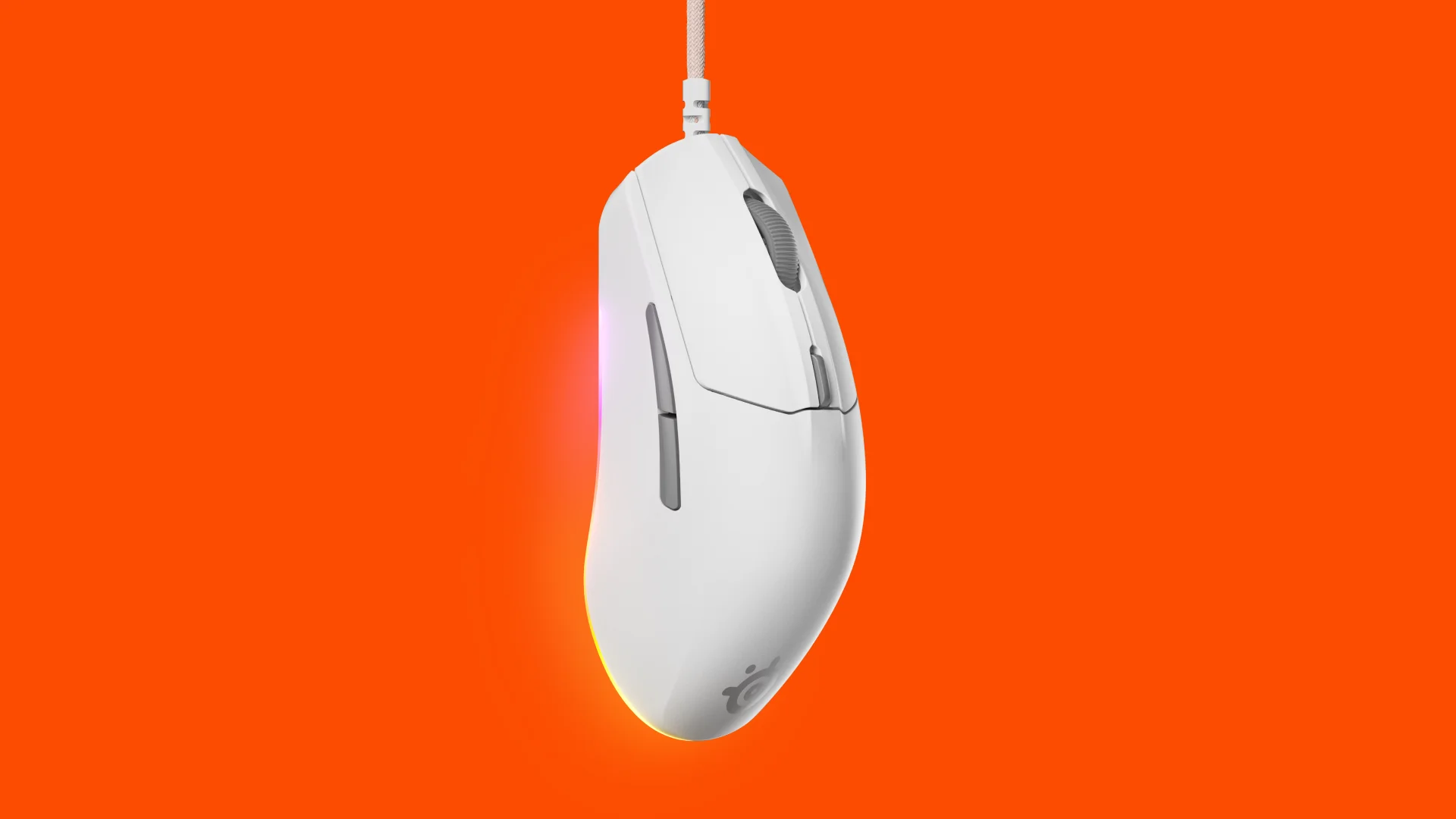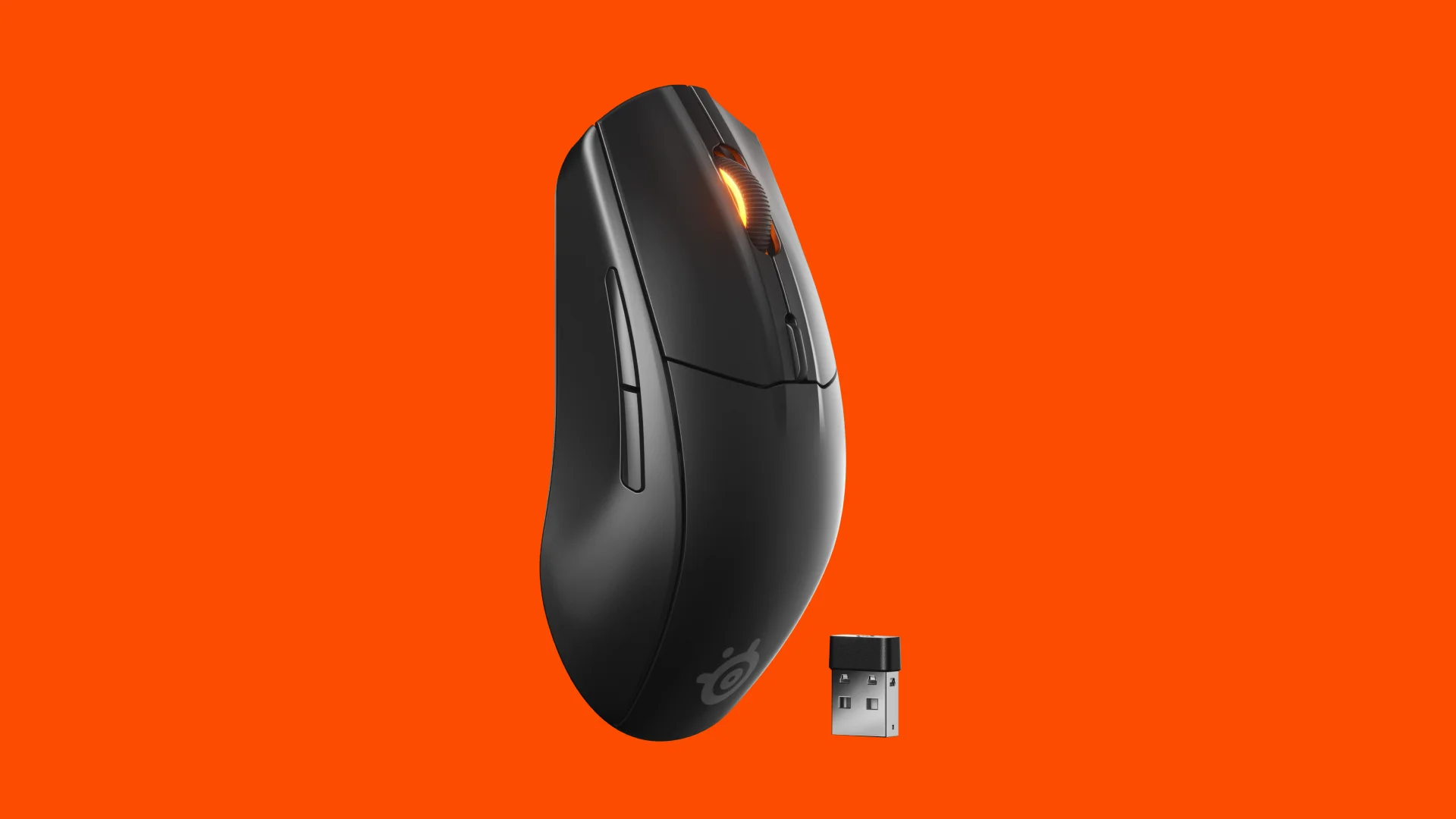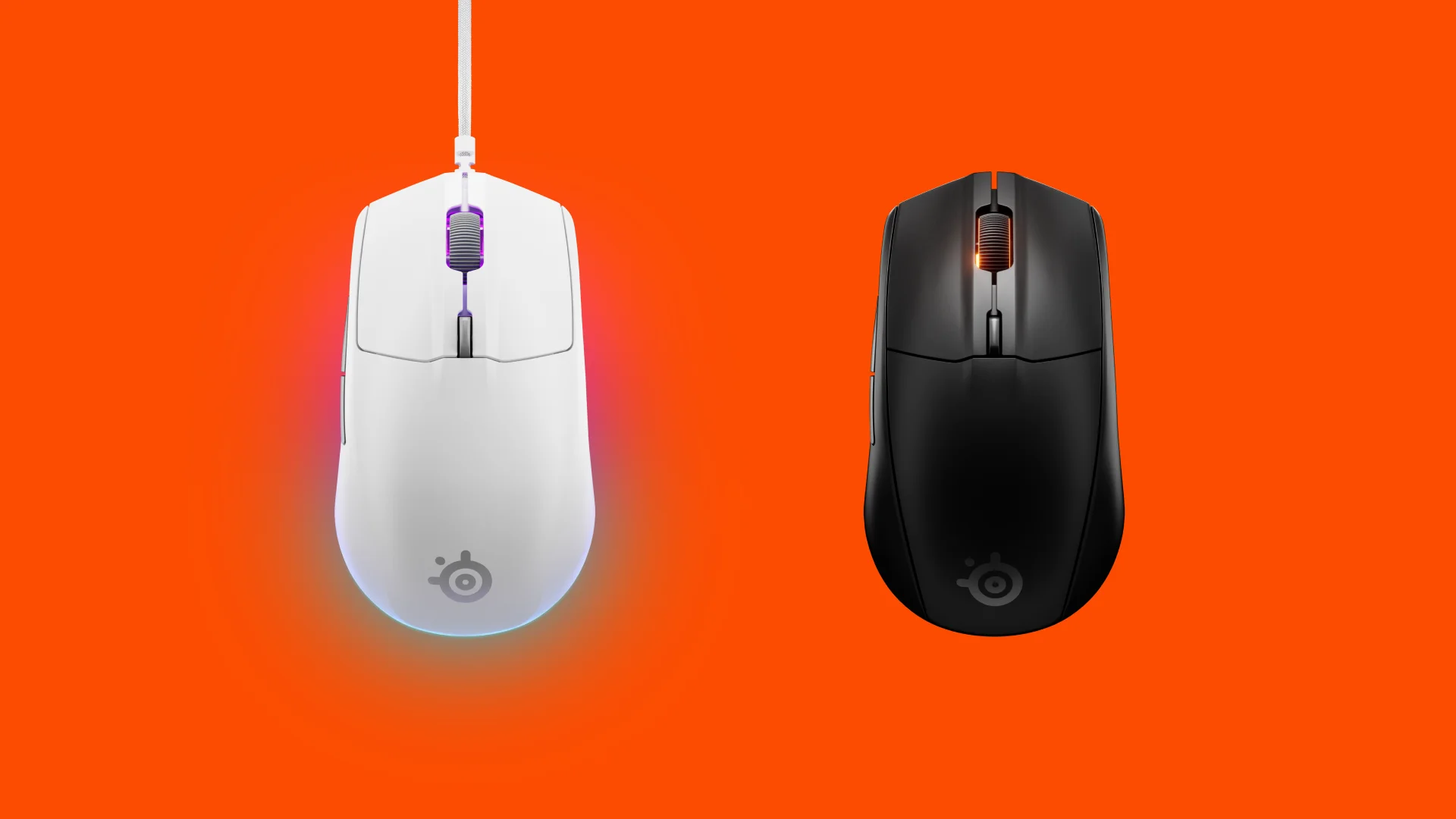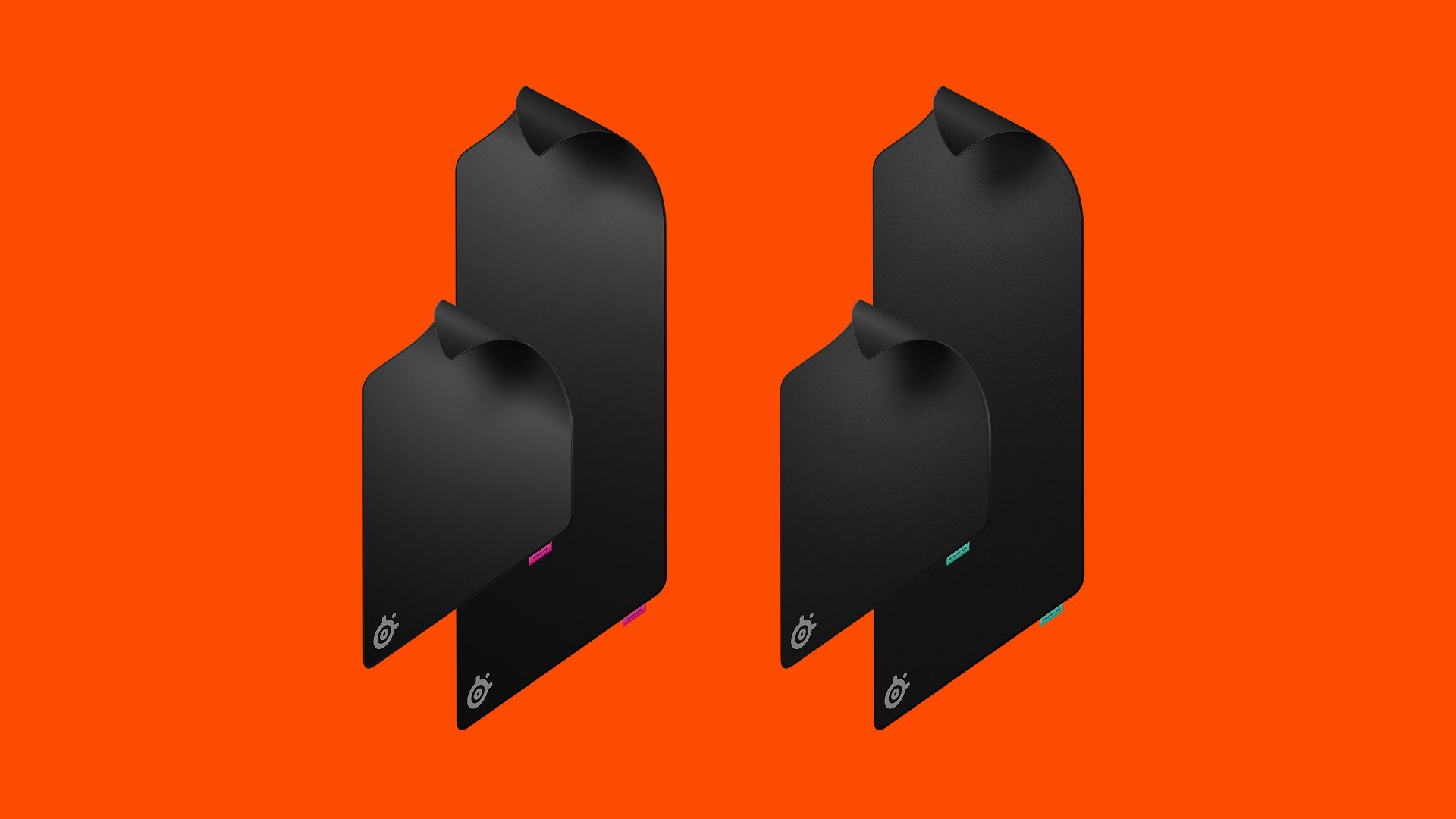Menu
SteelSeries Rival 3 Gen 2 Mouse Review
0 comment

SteelSeries Rival 3 Gen 2 stands out in the wired gaming mouse segment. Especially considering its resemblance to the wireless version in terms of design, this model stands out by delivering a more focused and reliable gaming experience. In this review, we aim to provide you with a more informed choice by examining both what the Rival 3 Gen 2 has to offer and how it differs from the previous-generation Rival 3.

Even if it features a symmetrical design, the mouse is optimized for right-handed use, offering an ideal shape especially for users with fingertip and claw grip styles — though it might feel a bit small for those who prefer a palm grip.
Weighing only 77 grams, it is well-suited for users who prefer a lightweight mouse for quick and precise movements. This weight minimizes wrist fatigue both during fast reflexes and extended use, making it a detail that directly impacts performance. Speaking of performance, the mouse features 100% PTFE skates on its underside, which minimize friction between the Rival 3 Gen 2 and the surface.

Apart from the classic black and white, it also comes with alternatives like light purple (lavender) and light blue (aqua), which is an added bonus for users who care about their setup aesthetics.
Additionally, it features 3-zone RGB lighting support. These RGB zones can be customized via the SteelSeries GG software and personalized with dynamic effects according to different games or usage scenarios. This is an important detail both in terms of aesthetics and functionality.
Rival 3 Gen 2 comes with a total of 6 programmable buttons. Similar to the RGB customization, each of these buttons can be assigned different functions through the software. You can even save specific profiles to the onboard memory based on the games you play, allowing your custom settings to remain accessible across different computers without requiring the software.

When it comes to the cable, SteelSeries has used a 1.8-meter USB Type-A 'Super Mesh' paracord cable, which becomes almost unnoticeable in high-DPI, fast-paced gaming scenarios.
For users who want a stable and consistent performance without dealing with connection drops or battery drain during long gaming sessions, this setup is highly advantageous.
Compared to the previous-generation Rival 3, this model uses the same TrueMove Core sensor but includes physical improvements such as 100% PTFE skates, an enhanced Super Mesh paracord cable, and a redesigned outer shell. While the Gen 1 model featured a more neutral design suitable for ambidextrous use, the Gen 2 is specifically optimized for right-handed users.

I tested the mouse primarily in reflex-focused FPS games like CS2 and VALORANT. With a 1000Hz polling rate and 1ms response time, the mouse movements translate directly and without delay to the screen. Especially in low DPI and high sensitivity scenarios, the mouse responses are both consistent and predictable.
Click feedback is noticeably crisper compared to the Rival 3 Wireless model, primarily because the wired version has no power consumption constraints. The mechanical switches, rated for 60 million clicks, deliver consistent performance even with long-term use. The clicks feel solid and balanced, and I didn't encounter any accidental presses during gameplay. Button placement is ergonomic, with the forward and backward thumb buttons easily accessible and highly functional.
SteelSeries GG currently supports Windows 10 and macOS 11 or higher.

Normally priced at 1,799 TL, the Rival 3 Gen 2 is currently available at a discounted price of 1,299 TL at the time of this review. The previous-gen Rival 3 is still around the 1,000 TL mark. From this perspective, the Gen 2 model easily justifies the price difference with its enhancements.
Design
Rival 3 Gen 2 attracts attention with its simple yet functional design. Its body is made of ABS plastic and features a matte surface, which not only prevents slipping in the hand but also minimizes the feeling of sweat during extended use.Even if it features a symmetrical design, the mouse is optimized for right-handed use, offering an ideal shape especially for users with fingertip and claw grip styles — though it might feel a bit small for those who prefer a palm grip.
Weighing only 77 grams, it is well-suited for users who prefer a lightweight mouse for quick and precise movements. This weight minimizes wrist fatigue both during fast reflexes and extended use, making it a detail that directly impacts performance. Speaking of performance, the mouse features 100% PTFE skates on its underside, which minimize friction between the Rival 3 Gen 2 and the surface.
Apart from the classic black and white, it also comes with alternatives like light purple (lavender) and light blue (aqua), which is an added bonus for users who care about their setup aesthetics.
Additionally, it features 3-zone RGB lighting support. These RGB zones can be customized via the SteelSeries GG software and personalized with dynamic effects according to different games or usage scenarios. This is an important detail both in terms of aesthetics and functionality.
Rival 3 Gen 2 comes with a total of 6 programmable buttons. Similar to the RGB customization, each of these buttons can be assigned different functions through the software. You can even save specific profiles to the onboard memory based on the games you play, allowing your custom settings to remain accessible across different computers without requiring the software.
When it comes to the cable, SteelSeries has used a 1.8-meter USB Type-A 'Super Mesh' paracord cable, which becomes almost unnoticeable in high-DPI, fast-paced gaming scenarios.
For users who want a stable and consistent performance without dealing with connection drops or battery drain during long gaming sessions, this setup is highly advantageous.
Performance
The most notable feature on the performance side is SteelSeries’ TrueMove Core optical sensor. This sensor offers sensitivity up to 8,500 DPI, with a tracking speed of 300 IPS and 35G acceleration, and that's why it delivers a satisfying gaming experience that can be considered close to competitive level within its segment.Compared to the previous-generation Rival 3, this model uses the same TrueMove Core sensor but includes physical improvements such as 100% PTFE skates, an enhanced Super Mesh paracord cable, and a redesigned outer shell. While the Gen 1 model featured a more neutral design suitable for ambidextrous use, the Gen 2 is specifically optimized for right-handed users.
I tested the mouse primarily in reflex-focused FPS games like CS2 and VALORANT. With a 1000Hz polling rate and 1ms response time, the mouse movements translate directly and without delay to the screen. Especially in low DPI and high sensitivity scenarios, the mouse responses are both consistent and predictable.
Click feedback is noticeably crisper compared to the Rival 3 Wireless model, primarily because the wired version has no power consumption constraints. The mechanical switches, rated for 60 million clicks, deliver consistent performance even with long-term use. The clicks feel solid and balanced, and I didn't encounter any accidental presses during gameplay. Button placement is ergonomic, with the forward and backward thumb buttons easily accessible and highly functional.
Technical Specifications
- Sensor: TrueMove Core Optical Sensor
- DPI Range: 200 – 8,500 DPI
- Polling Rate: 125 / 250 / 500 / 1000 Hz
- IPS: 300
- Acceleration: 35G
- Click Latency: 1 ms
- Buttons: 6 (programmable)
- Switch Durability: 60 million clicks
- Weight: 77g
- Dimensions: 120.6 x 58.3 x 21.6 mm
- Grip Style: Suitable for claw and fingertip grips
- Hand Orientation: Right-handed
- Connection: Wired (USB Type-A)
- Cable: 1.8m Super Mesh paracord
- Feet: 100% PTFE skates
- RGB: 3-zone RGB lighting
- Compatibility: Windows, macOS, Xbox, PS5, Android, iOS
Software
Rival 3 Gen 2 comes bundled with SteelSeries GG software, which allows extensive customization options including RGB lighting, DPI settings, polling rate, and button assignments. The software interface is user-friendly, and all configurations can be saved directly to the mouse’s onboard memory, allowing seamless use across different systems with your personal settings.SteelSeries GG currently supports Windows 10 and macOS 11 or higher.
In Summary
The SteelSeries Rival 3 Gen 2 is a strong option among wired gaming mice in its class. Compared to the previous Rival 3, it features better build materials, smoother movement thanks to 100% PTFE skates, and a more ergonomic design. While it uses the same TrueMove Core sensor, the overall experience feels much improved. It’s especially suitable for users who want low latency and a reliable wired connection.Normally priced at 1,799 TL, the Rival 3 Gen 2 is currently available at a discounted price of 1,299 TL at the time of this review. The previous-gen Rival 3 is still around the 1,000 TL mark. From this perspective, the Gen 2 model easily justifies the price difference with its enhancements.


